when I use NuSMV tools to verify if my CTL is right, I encounter a problem that make me so confused.
My model is
and here's the NuSMV code:
MODULE main
VAR
state : {ROOT, A1, B1, C1, D1, F1, M1};
ASSIGN
init(state) := ROOT;
next(state) := case
state = ROOT : A1;
state = A1 : {B1, C1};
state = B1 : D1;
state = D1 : F1;
TRUE : state;
esac;
CTLSPEC
AG( state=A1 -> AX ( A [ state=B1 U ( state=D1 -> EX state=F1 ) ] ) );
CTLSPEC
AG( state=A1 -> AX ( A [ state=B1 U ( state=F1 -> EX state=C1 ) ] ) );
CTLSPEC
AG( state=A1 -> AX ( A [ state=M1 U ( state=F1 -> EX state=C1 ) ] ) );
My CTL formula is as follows:
"AG( A1 -> AX ( A [ B1 U ( D1 -> EX ( F1) ) ] ) )""AG( A1 -> AX ( A [ B1 U ( F1 -> EX ( C1) ) ] ) )""AG( A1 -> AX ( A [ M1 U ( F1 -> EX ( C1) ) ] ) )"
NuSMV verified the above three formulas all of which turns out to be true .
So my question is that why the formula 2 and formula 3 turn out to be true?
